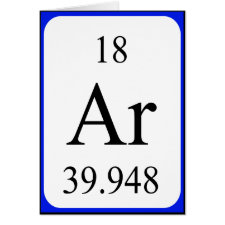
Authors: Liu Z, He H
Article Title: Synthesis and Applications of Boronate Affinity Materials: From Class Selectivity to Biomimetic Specificity.
Publication date: 2017
Journal: Accounts of Chemical Research
Volume: 50
Issue: (9)
Page numbers: 2185-2193.
DOI: 10.1021/acs.accounts.7b00179
Abstract: Due to the complexity of biological systems and samples, specific capture and targeting of certain biomolecules is critical in much biological research and many applications. cis-Diol-containing biomolecules, a large family of important compounds including glycoproteins, saccharides, nucleosides, nucleotides, and so on, play essential roles in biological systems. As boronic acids can reversibly bind with cis-diols, boronate affinity materials (BAMs) have gained increasing attention in recent years. However, real-world applications of BAMs are often severely hampered by three bottleneck issues, including nonbiocompatible binding pH, weak affinity, and difficulty in selectivity manipulation. Therefore, solutions to these issues and knowledge about the factors that influence the binding properties are of significant importance.These issues have been well solved by our group in past years. Our solutions started from the synthesis and screening of boronic acid ligands with chemical moieties favorable for binding at neutral and acidic pH. To avoid tedious synthesis routes, we proposed a straightforward strategy called teamed boronate affinity, which permitted facile preparation of BAMs with strong binding at neutral pH. To enhance the affinity, we confirmed that multivalent binding could significantly enhance the affinity toward glycoproteins. More interestingly, we observed that molecular interactions could be significantly enhanced by confinement within nanoscale spaces. To improve the selectivity, we investigated interactions that govern the selectivity and their interplays. We then proposed a set of strategies for selectivity manipulation, which proved to be useful guidelines for not only the design of new BAMs but also the selection of binding conditions. Applications in metabolomic analysis, glycoproteomic analysis, and aptamer selection well demonstrated the great potential of the prepared BAMs.Molecular imprinting is an important methodology for creating affinity materials with antibody-like binding properties. Boronate affinity-based covalent imprinting is a pioneering approach in molecular imprinting, but only a few cases of successful imprinting of glycoproteins by this method were reported. With sound understanding of boronate affinity, we developed two facile and generally applicable boronate affinity-based molecular imprinting approaches. The resulting boronate affinity molecularly imprinted polymers (MIPs) exhibited dramatically improved binding properties, including biocompatible binding pH range, enhanced affinity, improved specificity, and superb tolerance to interference. In terms of nanoconfinement effect, we explained why the binding pH range was widened and why the affinity was enhanced. The excellent binding properties made boronate affinity MIPs appealing alternatives to antibodies in promising applications such as disease diagnosis, cancer-cell targeting, and single-cell analysis.In this Account, we survey the key aspects of BAMs, the efforts we made to solve these issues, and the connections between imprinted and nonimprinted BAMs. Through this survey, we wish to pave a sound fundamental basis of the dependence of binding properties of BAMs on the nature and structure of the ligands and the supporting materials, which can facilitate the development and applications of BAMs. We also briefly sketch remaining challenges and directions for future development
Template and target information: Review - boronate affinity materials



Join the Society for Molecular Imprinting

New items RSS feed
Sign-up for e-mail updates:
Choose between receiving an occasional newsletter or more frequent e-mail alerts.
Click here to go to the sign-up page.
Is your name elemental or peptidic? Enter your name and find out by clicking either of the buttons below!
Other products you may like:
 MIPdatabase
MIPdatabase









